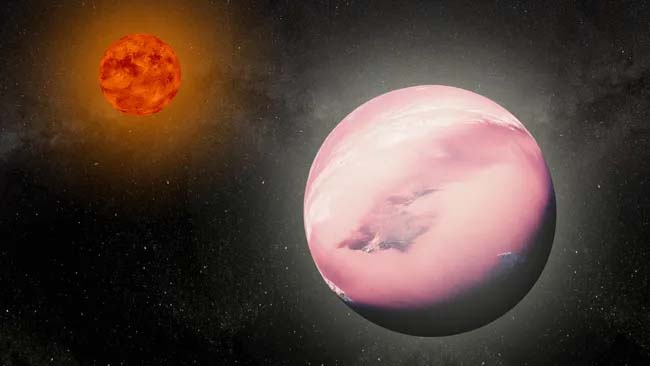Science: Today, we know of more than 5,000 exoplanets: planets outside our solar system that orbit other stars. While the effort to find new planets continues, we are constantly learning more about the exoplanets we have already discovered: their size, what they are made of and whether they have atmospheres.
Our team has now provided tentative evidence for a sulfur-rich atmosphere on a planet that is 1.5 times the size of Earth and located 35 light-years away. If confirmed, it would be the smallest known exoplanet with an atmosphere. The possible presence of sulfur dioxide (SO₂) and hydrogen sulfide (H₂S) gases in this atmosphere indicates a molten or volcanic surface.
In our solar system, we have two distinct categories of planets – small rocky planets, which include Earth and Mars, and gas giants such as Jupiter and Saturn. However, exoplanets span a large spectrum of sizes. There are no planets in our solar system whose size falls in the range between Earth and Neptune, but it turns out that this is the most common type of planet seen around other stars in our galaxy. Planets close to the size of Neptune are called sub-Neptunes and planets close to the size of Earth are called super-Earths. L 98-59 d is a super-Earth, slightly larger and heavier than Earth. The composition of these planets’ atmospheres is still an open question, which we are just beginning to explore with the James Webb Space Telescope (JWST), launched in 2021. L 98-59 d was discovered in 2019 with NASA’s TESS space telescope.
Most exoplanets, including L 98-59 d, have been detected using the “transit method.” It measures the tiny dip in starlight when a planet passes in front of its star. This dip is more pronounced for larger planets and enables us to infer a planet’s size. Even the JWST cannot distinguish these small planets from their host stars – because they orbit their stars too closely. But there is a way to “see” the planet’s atmosphere from this trapped light. When a planet passes in front of its star, some of the starlight passes through the planet’s atmosphere, colliding with gas molecules or atoms there, and reaches us on Earth.
